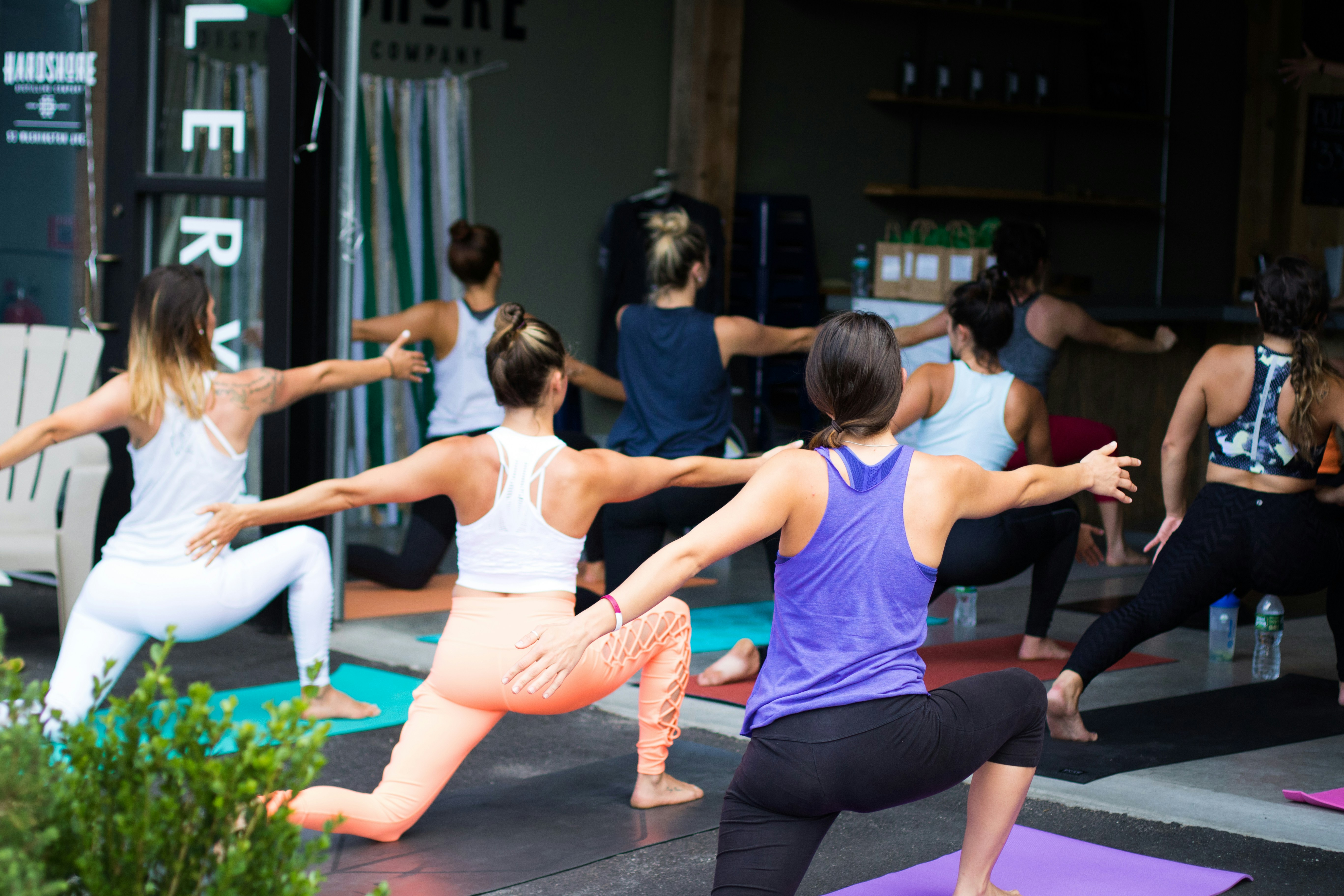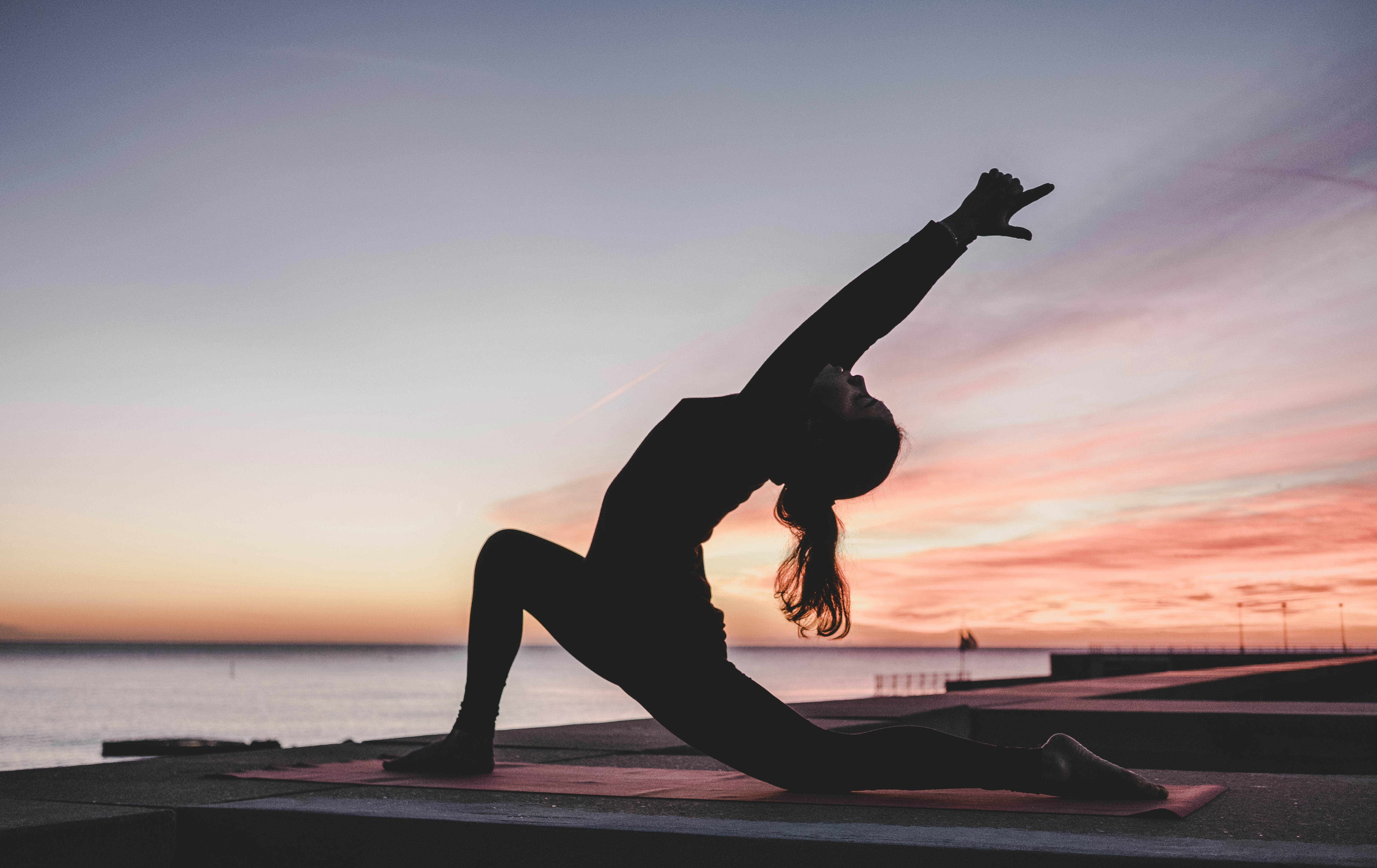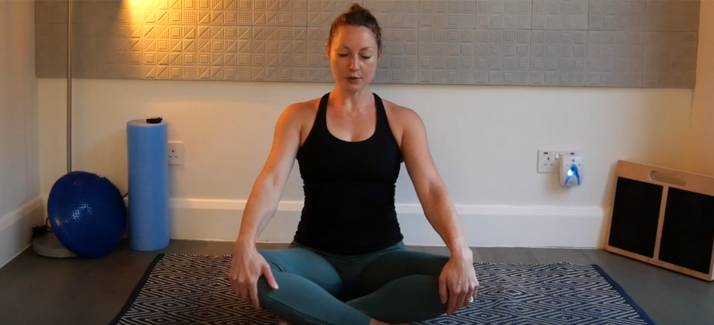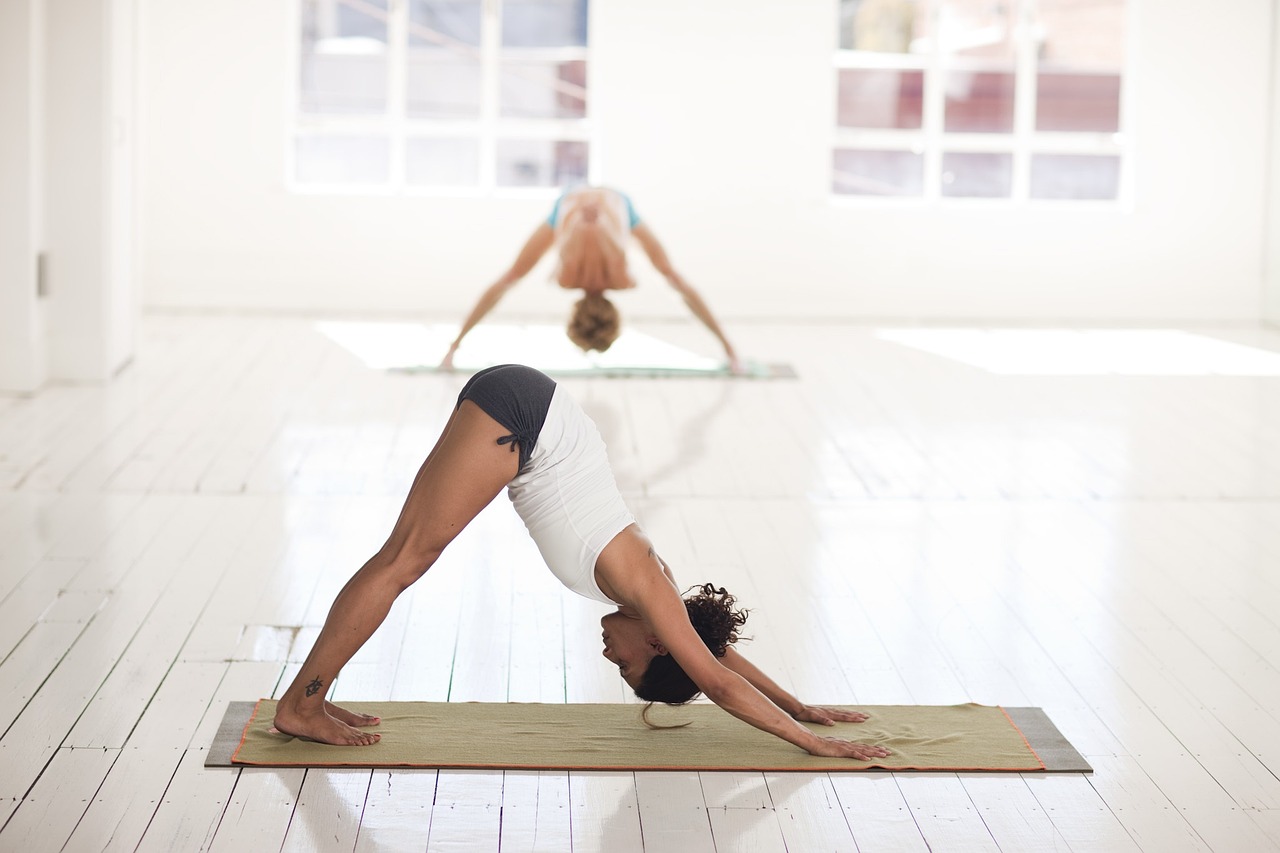Yoga - Its Origin & Development
Yoga is an ancient practice rooted in Indian philosophy that has been transformed into a worldwide phenomenon. At its core, yoga focuses on harmonising the mind, body, and spirit through various practices. These include physical postures (asanas), controlled breathing techniques (pranayama), deep relaxation, and meditation. For beginners, yoga can seem mystical and intimidating at first. However, starting a regular yoga practice is much more accessible than you might expect. This comprehensive guide aims to equip newcomers with everything they need to start experiencing the incredible benefits of yoga for themselves. We will cover the fundamental concepts and components of yoga practice, the multitude of physical and mental perks it offers, essential props and equipment to support your training, guidance on selecting the right yoga style and class intensity to match your level, as well as introductions to foundational poses that safely ease beginners into proper technique.
By starting slowly and listening closely to your body, yoga can be tailored to all experience levels. With consistent practice, you may be amazed by the positive transformations yoga can catalyse in your health, fitness, stress resilience, emotional balance, and overall well-being. So unroll your mat, and read on to uncover how this adaptable and rewarding practice can infuse your life with whole-person harmony!
What Is The Difference Between Yoga And Pilates?
While yoga and Pilates share some common elements like emphasising strength, flexibility and breathwork, they vary significantly in their goals and methods. Both can build core power, coordination, and cardiovascular stamina when practised consistently. However, yoga places greater emphasis on cultivating mental tranquillity and heightened self-awareness alongside the physical. Pilates focuses more narrowly on refining posture and strict spinal alignment during training. Instructors cue precise positioning and corseting of the waist with each minute movement. Meanwhile, yoga encourages practitioners to flow smoothly between poses guided by breath. Attention centers inward to track sensations, rather than fixing sights on an external form. Pilates relies on specialised equipment like the Cadillac, Reformer, and Wunda Chair that provide spring resistance for the body to work against. Yoga utilises only body weight and gravity through creative positioning. While Pilates works the body hard, yoga also calms the nervous system through long holds, breath regulation and meditation. Most importantly, yoga provides a complete lifestyle philosophy for enhancing the well-being of body, mind and soul. The spiritual elements and mindfulness mean the benefits of yoga permeate far beyond the mat into everyday life. The two systems can certainly complement each other, especially for athletic conditioning. However, yoga offers a more integrative pathway to health by unifying all aspects of human existence.
What Are The Different Types Of Yoga?
There are over 100 schools of yoga catering to various needs and goals:
Hatha yoga: Best for beginners, focusing on basic postures at a gentle pace
Ashtanga yoga: Fast-paced, intense style synchronising breath and movement
Iyengar yoga: Emphasising precise bodily alignment using props like blocks and straps
Bikram yoga: Heated to 100°F with the same 26 poses per class
Vinyasa yoga: Fluid, movement-intensive practice guided by breath
Yin yoga: Holding mostly floor postures passively for longer times
Restorative yoga: Relaxing practice using props to support the body
The Benefits of Yoga
Starting a new exercise regime can seem challenging, but yoga is one of the most accessible for novices. Here is a closer look at the many benefits of yoga to motivate you:
Physical Benefits
Improved flexibility → Yoga sustains a variety of poses focused on lengthening different muscle groups that are held for extended periods with smooth transitions between them. This progressively stretches the connective tissues and muscles leading to better flexibility.
Increased muscle strength → Most asanas involve isometric contractions where muscles sustain tiny movements against resistance, building muscle endurance and strength over time. This protects joints through a wider range of motion.
Enhanced balance and mobility → The combination of poses works deep stabiliser muscles not actively used otherwise, improving coordination, proprioception and balance. This also ups mobility through increased joint function.
Reduced chronic pain → Yoga allows moving through the full range of motion available, lubricating joints and strengthening supportive muscles which can gradually reduce inflammatory pain from conditions like arthritis.
Weight management → A regular yoga practice burns calories and coupled with mindful eating principles followed by some schools of yoga facilitates healthy, sustainable weight loss and maintenance.
Cardiovascular health → As a low-impact exercise, yoga keeps the heart rate up, improving blood circulation and oxygenation. Reducing blood pressure and cholesterol over time minimises cardiac risks.
Mental & Emotional Benefits:
Decreased stress → Learning controlled breathing while holding challenging poses redirects the mind, activating the parasympathetic system to reduce anxiety and instil deep relaxation.
Improved sleep quality → The ability to calm mental chatter and physical hyperarousal through yoga promotes sounder, more restorative sleep with heightened daytime alertness.
Enhanced mindfulness → Tuning inward to physical sensations during yoga enhances awareness of subconscious tensions and thought patterns, allowing conscious release - the very definition of mindfulness.
Self-actualisation → Yoga sets the stage to know yourself beyond pre-conceived notions by directly experiencing your capabilities. This builds confidence and the motivation required to achieve your highest potential physically, mentally and spiritually.
Sense of community → Group classes allow meaningful connections through a shared interest boosting motivation, accountability and enjoyment while providing an emotional support network.
Essential Yoga Gear and Props
To begin exploring yoga styles and classes in your area that meet your needs and abilities, certain basic gear and props come in handy:
Yoga Mat → Provides cushioning and grip fundamental to practice by comfortably supporting you during floor poses while preventing hands and feet from sliding. Look for durable, textured PVC mats around 1/4-inch thick.
Yoga Blocks → Offer height and support in poses demanding flexibility beyond your current range. They provide leverage to stretch further while preventing overexertion or strain. Cork and foam blocks with tapered edges are common.
Yoga Strap → Help extend reach allowing hands or feet to grasp poses too distant otherwise, facilitating correct alignment. Sturdy 6 to 10-foot woven straps that won't stretch over time are ideal.
Yoga Bolster → Supports and lifts the body in restorative poses by propping up arms, legs or back comfortably. Look for compact, portable and washable cylindrical bolsters.
Yoga Blanket → Provide a soft surface for comfort and warmth during seated or lying postures while covering sticky mats during relaxation. Lightweight microfiber or cotton blankets that fold up small are preferred.
Yoga Wheel → Enable deeper opening of the upper back in backbends by arching over them slowly. Beginners benefit from more rigid foam or wood wheels with traction.
Yoga Sandbag → Weigh down body parts to relax muscles, stabilise poses and intensify stretches with these cloth bags filled with sand. Smaller 5 to 10-pound bags offer versatility.
Yoga Eye Pillow → Made of cloth filled with lightly scented flaxseed or beads, these apply gentle pressure on the eyes to soothe nerves, reduce fatigue and induce relaxation during savasana.
Yoga Outfit → Wear comfortable stretchy athletic clothing allowing unrestricted movement in poses. Form-fitting leggings, tank tops, shorts and sweaters work well. Avoid baggy shirts or flowing fabrics that can trip you up. Stick to bare feet with clean, clipped nails to grip the mat.
Beginner Yoga Poses
Starting yoga can be intimidating with countless schools and over 100 poses to choose from. To build a strong foundation, practice these essential beginner asanas under expert guidance:
Foundational Standing Poses
Mountain Pose (Tadasana) → Standing tall yet relaxed, this pose realigns posture and reminds one to root down into the earth while reaching upwards effortlessly through the crown of your head.
Triangle Pose (Trikonasana) → Stretching your entire side body fully, this standing lateral bend pose improves balance and coordination while building leg strength. Ensure the raised arm and front leg point in the same direction.
Tree Pose (Vrksasana) → Balancing on one leg while bending the other and joining its foot to the standing leg's inner thigh, this pose improves balance, concentration and groundedness. Use a wall initially and progress to hands-free.
Inversions & Arm Balances
Downward Facing Dog (Adho Mukha Svanasana) → The quintessential inversion pose strengthens the upper body and stretches calves and hamstrings as you support body weight on hands and feet while lifting hips skyward to form an inverted 'V shape. It builds total-body endurance.
Seated, Kneeling & Supine Poses
Child’s Pose (Balasana) → This resting pose gently stretches hips, thighs and ankles while lowering heart rate and blood pressure. Kneel while sitting back on your feet as you exhale lowering your torso between thighs with arms extended front.
Bridge Pose (Setu Bandhasana) → Lie supine; bend knees, feet hip-width apart flat on the floor. Exhale to lift hips upward into the air to strengthen glutes, open chest and relax lower back down.
Corpse Pose (Savasana) → This meditative pose lets all effort dissolve as you lie flat on your back with eyes closed, allowing the breath to flow without conscious direction to integrate the practice. Stay 5-15 minutes.
Spinal Flexion & Extension
Cobra Pose (Bhujangasana) → This reclining heart opener boosts respiration and blood circulation while stretching the abdominals gently. Lie prone; place palms under your shoulders, and straighten your arms to arch your chest off the floor.
Cat Cow Pose Flow → Sequencing gentle spinal flexes and extensions lubricates vertebrae. The transition from concave back by lifting it on inhale (cow pose) to rounding back as you exhale by pulling the belly in (cat pose) on all fours.
Studio Classes vs At-Home Practice
Yoga delivers immense benefits for both physical and mental well-being with incredible value. However, beginners often wonder whether professional guidance is essential when getting started or practising at home suffices. Here’s what to consider:
Seeking In-Person Instruction
When starting in yoga, enrolling in beginner classes at a local studio or taking private sessions with a certified instructor can greatly hasten your learning and skill-building process. Skilled teachers progress newcomers swiftly by providing hands-on correction to perfect alignment, customising sequences to suit ability levels, and recommending modifications to prevent strain. Additionally, instructors closely monitor students in person to ensure proper technique from the very first class, helping prevent the formation of bad habits that could cause injury further down the road. Attending studio classes also fosters attendance consistency and sustained effort, as the structured schedule and social group setting provide helpful accountability.
If you are an absolute beginner to yoga with zero background, having an instructor right there to ask specific questions allows you to benefit from their experience in real-time. Or perhaps you have specific injuries, conditions or limited mobility that require customised postural adjustments - an adept teacher can provide specialised corrections tailored to your unique physiology. Alternatively, you may desire external accountability to motivate establishing a regular practice, especially when forming a novel habit like yoga. Showing up to a consistently scheduled studio class or private session enables that productive reinforcement. On the other hand, some practitioners have limited proprioceptive awareness and challenges accurately diagnosing effort levels or alignment details without abundant external feedback. Dedicated supervision ensures optimal effort is maintained. For those who thrive with communal motivation, practising in a shared space surrounded by yoga enthusiasts fosters inspiration through meaningful connection. The group dynamic can enhance psychological experience and adherence. For some, personalised attention is essential whilst honing foundational skills to receive verbal adjustments through detailed observation. Nuanced improvements stem from instructive guidance.
Exploring At-Home Practice
For yogis with established backgrounds who have undergone thorough training previously, supplementing occasional studio attendance with consistent home practice guided online or via apps can sustain advancement once the correct methodology is instilled. Many dedicated practitioners effortlessly maintain motivation for self-directed learning fueled solely by intrinsic inspiration rather than external oversight. If your existing exposure to yoga has imprinted proper anatomical form and alignment, you can evaluate the technique accurately without instructor input. Also, certain yogis possess a strong innate drive lacking the requirement for social push - self-administered sessions fully satisfy their needs. Likewise, those confident modifying poses based on acute somatic wisdom of personal limits need little guidance once the basics are grasped.
If finances constrain access to studio participation for some, an autonomous home practice expands the affordability of nurturing the yoga lifestyle. Moreover, select temperaments simply prefer exercising privately within home comfort instead of public facilities. Compatible self-reliant students can cultivate skills independently by effectively utilising digital resources. Additionally, frequent travellers stand to benefit greatly from retaining a portable personal practice that grants consistency amidst nomadic existence. Finally, without abandoning cherished community classes, integrating supplemental solo training intends to boost practice frequency and rapidity of measurable gains.
What to Expect: Yoga Results Timeline
Those new to yoga often wonder what outcomes to expect from regular practice or how long it takes to notice a difference. Here's an overview:
Initial Effects
Improved sleep: Relaxation techniques promote quicker sleep onset and more restorative deep sleep within 1-2 weeks.
Reduced anxiety: Focused breathing and meditation lower stress hormone levels, often sharply reducing anxiety within a month.
Muscle soreness: Unfamiliar movements activate muscle groups differently, causing soreness lasting 24-48 hours, especially after the initial few sessions.
Coordination challenges: Smoothly transitioning between poses while controlling breath may involve steep learning curves requiring a few classes to improve flow.
Medium-Term Changes
Increased flexibility: Accumulated time stretching connective tissues lengthens muscles requiring around 6 weeks of consistent practice depending on individual variability.
Enhanced stamina: Cardiovascular endurance visibly improves allowing sustaining longer holds, sequences and sessions within 2-3 months.
Stress resilience: Lower reactivity to triggers develops within 2 months as parasympathetic activation becomes habitual via practice.
Body awareness: Proprioceptive sensitivity to physical signals intensifies allowing prevention of injury within 3 months.
Long-Term Adaptations
Core strength enhancement: Abdominal tone and back support muscles strengthen significantly in 6 months, improving posture and body mechanics.
Weight loss maintenance: Healthy sustainable fat loss from muscle strengthening and mindful self-care manifests in around 6-9 months.
Cardiorespiratory fitness: Maximum oxygen uptake indicating heart health and efficiency maximises after 1-2 years of challenging cardiovascular yoga.
Injury risk reduction: Joint stability and balanced strength development around 2 years minimise accidents and age-related musculoskeletal issues.
Related articles

Let us know you agree to cookies
We use marketing, analytical and functional cookies as well as similar technologies to give you the best experience. Third parties, including social media platforms, often place tracking cookies on our site to show you personalised adverts outside of our website.
We store your cookie preferences for two years and you can edit your preferences via ‘manage cookies’ or through the cookie policy at the bottom of every page. For more information, please see our cookie policy.
.jpg/_jcr_content/renditions/cq5dam.web.320.320.jpeg)











